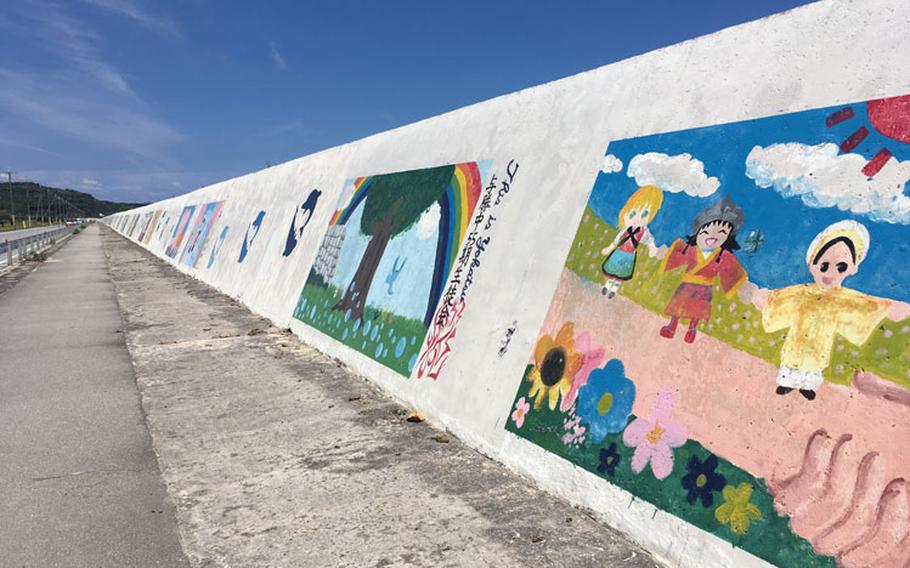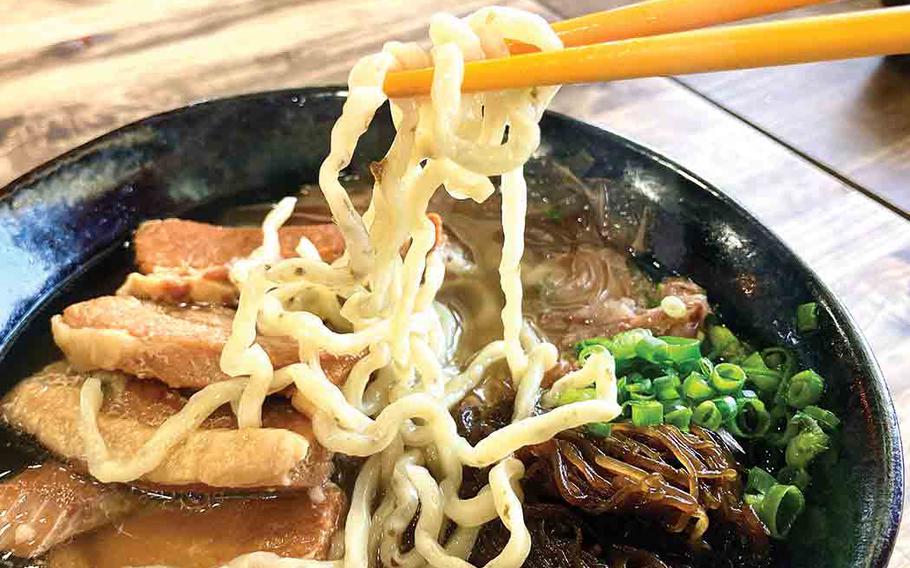
(Photo by Shoji Kudaka/Stripes Okinawa)
When I drive on Kaichudoro causeway to go to the remote islands to the east of Okinawa’s main island, a stop at Umi no Eiki, a roadside station, is a must. It is a good place for not only a superb ocean view but also a hearty meal.
Kaichu Chaya is a café housed on the first floor of the roadside station’s building.
Its wood-themed interior is very spacious and relaxing. The walls are adorned with ornaments in the shape of anchors and boats, in line with the café’s name, which translates to “teahouse in the middle of the ocean.”
Here you can enjoy food as well as coffee and juices. Their menu items include soba noodles, curry rice, taco, pizzas, and more.

Okinawa soba (Photo by Shoji Kudaka/Stripes Okinawa)

Okinawa soba (Photo by Shoji Kudaka/Stripes Okinawa)
My favorite at this place is their sanmainiku (pork belly) soba for 990 yen (approx. $6.78, tax included). Its broth has a rich taste of bonito flake, which, to me, is one of the best I have had in Okinawa. This menu item even comes with some bonito flakes topping the noodles, which adds to the exquisite flavor. The noodles got a unique texture thanks to mozuku seaweed kneaded in.
Slurping the smooth noodles and tasting the rich flavor of bonito flake broth while looking out the big window at the wonderful ocean view rejuvenates me before heading back on the causeway for a long drive to the islands.
After lunch, I headed back to the coastal road to check out a 984-foot seawall featuring a number of colorful paintings. They were drawn by local children for an art competition called “Hiramiya Gogan Art Concour.” The artwork depicts various scenes from local culture and life, livening up the huge canvas.
Past the colorful seawall, just before the road transitions to Miyagi Island, one of Henza’s most symbolic landmarks will come into view – a group of many large tanks. These 45 oil tanks contain more than 1.1 billion gallons of oil and form the southmost petroleum terminal of Japan, according to the Okinawa Central Terminal Station.

Oil tanks (Photo by Shoji Kudaka/Stripes Okinawa)
The tanks were originally constructed in the 1970s by Gulf Oil, which at the time was known as one of the “Seven Sisters” along with Mobile, Texaco, Chevron and others. The then-major oil company was behind the construction of Kaichu Doro Causeway, which in 1973 finally connected Henza and the Okinawa main island, according to Okinawa OCTS’ website.
Before, locals either crossed the ocean at low-tide or took a boat at full-tide to the main island. In the 1950s, a truck would transport locals at low tide, but accidents would raise Henza residents’ desire for a bridge.
Once a lifeline for locals, today the causeway brings many tourists not only to the island, but also further to other surrounding islands, and the tanks are a reminder of that history.
With 1314.6 acres of land and a 4.3-mile circumference, Henza Island may not be big, but the views and history are a nice reason to pay a visit.
Kaichu Chaya
GPS Coordinates: 26.332598, 127.929175
Hours: 10:30 a.m. – 9 p.m.
*Pets are welcome on the terrace


AloJapan.com